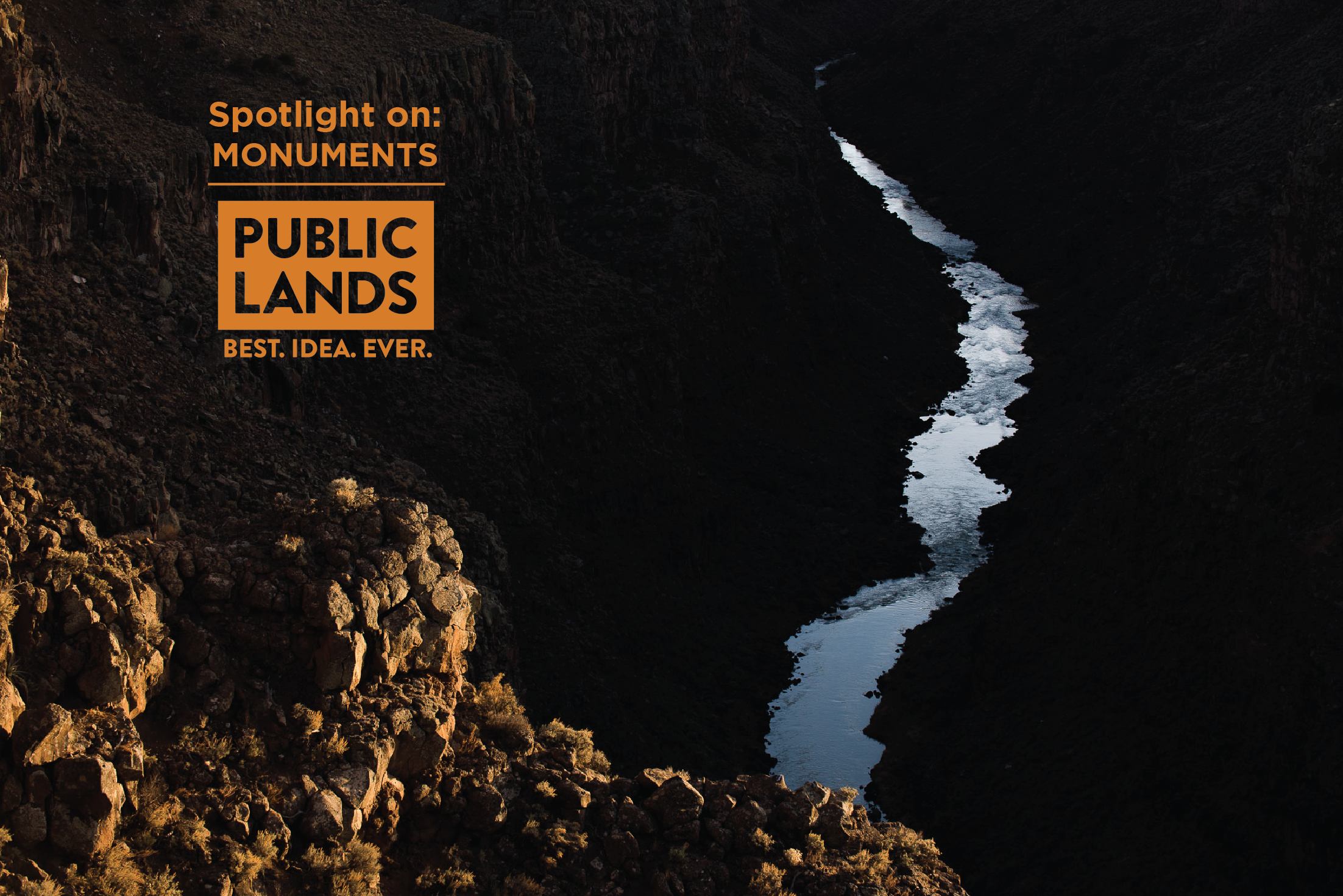Note: this is part of a series of blogs detailing the Antiquities Act and national monuments that matter to hunters and anglers. Come back and visit in the coming days to learn more about your public lands and how national monuments conserve our hunting and fishing heritage.
By Greg McReynolds
The Red River crashes into the Rio Grande deep in the gorge. On the rim 800 feet above, the confluence is hidden. Low pinon and juniper poke up from the flat, sage-covered mesa. To the east, the Sangre De Cristo Mountains loom. Below, the gorge stretches out before you, a long rent in the earth with walls that seem steeper than they should. Far below, the Rio Grande seems a languid ribbon of off-color water draining slowly south. Up close, the river is not lazy at all, but a rushing torrent. What appear to be rocks from up top are in fact boulders, some as big as cars or small houses.
It’s a mile to the bottom. A damn-steep mile that will punish your knees on the way down and everything else on the way back up.
I got my first taste of the gorge as a teenager, dropping in for days at a time with a fly rod, a handful of iodine tablets and a sleeping bag that kept me alive, but never warm.
One trip, I hung my pack from a tree near the trail. It was filled with bean and cheese tacos for a small group lunch. Mid-day, we found the pack somehow knocked down, 50 feet away. My pack was ripped open. Worse yet, a bear had eaten my tacos.
On another trip, a novice angler punched a large Copper John through my index finger and I hiked out with my hand throbbing. There was the September day Gregg Scott and I hiked into the upper canyon and fished stimulators. We caught 6 fish in two hours on the surface, the smallest was 17 inches. There was the time we got caught halfway up the trail in a hailstorm. Or the time I assured my wife we were perfectly safe from lighting so far down in the gorge. Seconds later, lighting snaked all the way down and struck a tree so near to us that we were momentarily blinded by the flash.
In 2009, New Mexico Senator Jeff Bingaman introduced legislation to protect the gorge as an NCA. Companion legislation in the house by New Mexico Representatives Ben Ray Lujan and Martin Heinrich. The bill was introduced in both houses again in 2011 and 2013. Unfortunately, Congress was unable or unwilling to act even though the bill was supported by the sportsmen, the county, the local community and the Governor.
Ultimately, Congress never voted on Rio Grande del Norte. Fortunately, President Obama declared Rio Grande del Norte a National Monument in 2013, using his authority under the Antiquities Act to protect the Rio Grande Gorge for future anglers.
The same story can be told for Browns Canyon National Monument in Colorado, Berryessa Snow Mountain National Monument in California and Organ Mountains – Desert Peaks in New Mexico. All of these public lands that are now protected as national monuments were first legislative proposals – legislation that Congress failed to act on.
It is the pattern that goes as far back as 1911 and the designation of 13,884 acres of public land as the Colorado National Monument. With bicameral legislation languishing in Congress, Representative Edward T. Taylor wrote President Taft urging him to create a national monument, explaining that “The people have been trying to have it set aside as a national park and Senator Guggenheim and I have had bills in Congress for that purpose. But Congress does not seem to be disposed to create national parks…”
From some America’s first national monuments to some our most recent, these designations have occurred in response to Congress failing to act on legislation despite overwhelming local support. When Congress is unable to take action on conservation initiatives, the Antiquities Act provides a vehicle to see these proposals through to fruition.
Even though I no longer live in New Mexico, the Rio Grande Gorge is part of my story. It is a place that formed me not only as a fly angler, but as a conservationist and as a person. It is a place that deserves to remain. A place where future generations will journey to catch fish and get skunked. A place to explore and hike and sweat and learn how to hang a pack out of reach of bears and wade the cold, swift water of an iconic river.
Because of the Antiquities Act, the Rio Grande does – and will – remain.



